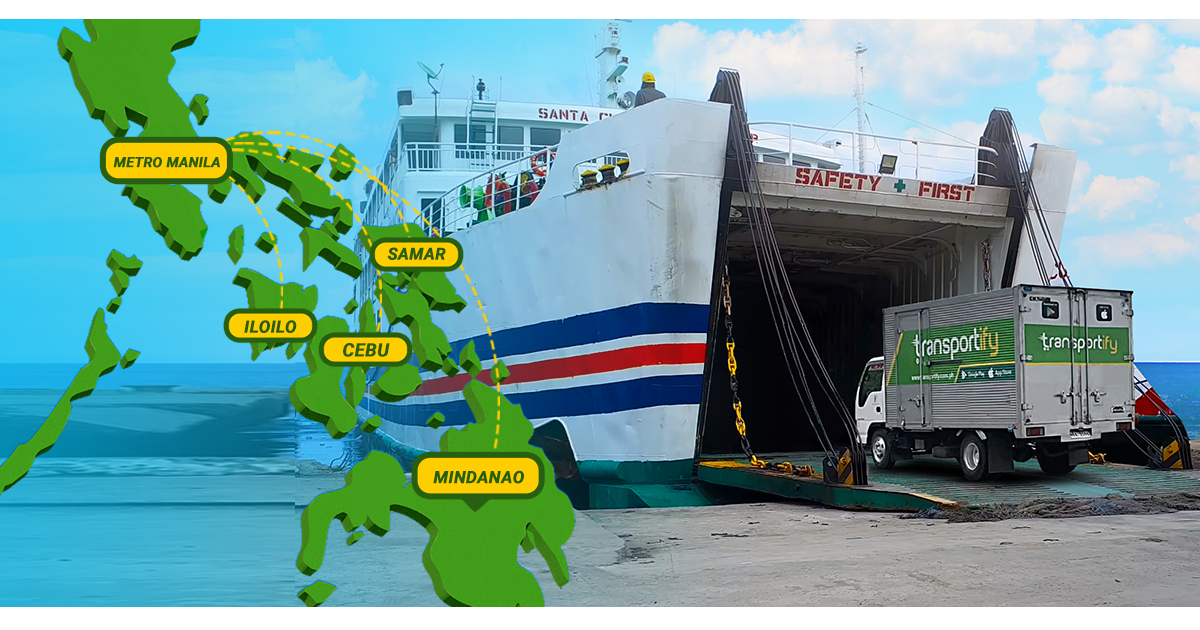
Have you ever explored the Philippines’ remarkable nautical highway system or delved into the world of Roll On Roll Off terminal system? If not, you’re in for an enlightening journey as we delve into both transport systems and their transformative impact on interisland shipping in the Philippines. Let’s dive right in.
Understanding the Roll-On, Roll-Off Terminal System
The Roll-On, Roll-Off Terminal System (RRTS) is an extensive network of routes that seamlessly connects provinces and cities across the Philippines, including many of its islands. This innovative system has substantially reduced travel times, revolutionizing both tourism accessibility and the efficiency of roro shipping goods and merchandise.
Take a look at the following table, which outlines vehicle rates from Manila to major cities in the Philippines.
RORO, short for Roll-On, Roll-Off, describes a ferry system that facilitates the easy boarding of vehicles, from 10-wheeler trucks to compact cars, onto ferries. These ferries efficiently transport vehicles across bodies of water that previously required arduous detours.
Roll on roll off freight vessels come in various shapes and sizes, with some employing crane systems to load heavy freight shipping containers for onward distribution of roro in the Philippines.
In the early 2000s, the cost of moving a twenty-foot container from Davao City to Manila was a staggering $1.50 per nautical mile, compared to a mere 50 cents for overseas shipping to destinations like Hong Kong and Bangkok. Recognizing the need for an improved system, the Philippine government introduced the RORO terminal system in 2003. By allowing cargo vehicles to board Roro shipment directly, significant time and money were saved in logistics costs.
As cargo vehicles can now board the RORO vessels directly, much time and money were saved in terms of logistics costs.
SEE ALSO
Transforming Interisland Shipping in the Philippines
The Strong Republic Nautical Highway System (SRNH) and RRTS have had a monumental impact on interisland shipping within the Philippines, playing a pivotal role in the nation’s economic development. The effectiveness of a transportation system is paramount, especially in a country with over 7,500 islands that must be interconnected for the smooth transportation of people and goods.
While there is still room for improvement in the Philippines’ transportation infrastructure, there’s no denying the profound change these transport systems have brought. They have ushered in an era of inclusive growth, enabling smaller island economies to connect and offering greater mobility to the entire population.
Enhancing Mobility for Islanders
Prior to the advent of SRNH and RRTS, residents of the 7,500 islands faced considerable challenges when traveling to neighboring islands, cities, and provinces. With these comprehensive transport systems in place, the entire population of the Philippines can now travel across the country more conveniently.
In addition to increased mobility, connecting the islands and their economies to the mainland Philippines has created more economic opportunities, including improved access to employment.
Eliminating Unnecessary Costs
The previous interisland transportation methods were inefficient, resulting in numerous unnecessary fees and time wastage. SRNH and RRTS have led to significant cost savings in terms of financial resources.
Facilitating Economies of Scale
With access to more ports, the ability to conduct frequent trips with faster turnarounds has been pivotal in the country’s economic development. The popularity of RORO has grown immensely, expanding from 34 routes to over 113, primarily due to the interisland shipping capabilities made possible by these transport systems (Go, 2020).
Boosting Agriculture
Again, there is no end to the benefits that an advanced transportation system provides an economy. It isn’t just the logistics, tourism, and eCommerce industries that have benefited greatly from the changes, but the agricultural industry as well.
In fact, these RORO ports have reported to be moving 60% more agricultural products when compared to their non-RORO counterparts (Go, 2020). This is because they are able to move higher-value products for a lower cost. The greater frequency at which these transactions occur, the cheaper it becomes to ship more frequently without overstocking on certain items.
Expanding Trade Opportunities
The RORO system alone has facilitated a 52% increase in interisland trade. This has led to a diverse range of products and expanded trade partnerships, spurring remarkable growth in various Philippine provinces (Go, 2020).
At Transportify, we strongly support both the SRNH and the RRTS. These innovative steps toward driving the Philippines forward have had some amazing effects. They’ve allowed logistics companies like ours to thrive and provide a growing number of communities with access to eCommerce shopping, better medicine, and more food.
As the years go by, more and more time and money will be invested in these amazing transport systems as we continue to grow. The Philippines has a long way to go, but we are well on our way to establishing ourselves as an attractive nation for investments.
Conclusion
To conclude, the SRNH and Roll On Roll Off Terminal System have been invaluable to interisland shipping in the Philippines. Between greater accessibility to employment opportunities, increased wealth, and smaller economies being able to join together, they have enabled the Philippines to achieve a lot.
In particular, eCommerce has been thriving. More and more customers are able to access freight forwarder services and with companies like Transportify providing fast and consistent deliveries, this economy will only continue to grow.
If you are interested in learning more about Transportify and the services that we offer, then please do not hesitate to contact us. Whatever questions you might have, our friendly team of customer service representatives will be delighted to assist you.
 | or |
Frequently Asked Questions:
What is the roll on roll off terminal system?
🚚 The roll on roll off terminal system is a series of nautical highways established in the Philippines. It was created in the year 2003 with the goal of making transportation of people and goods more efficient and thus improve the overall economy of the Philippines. Today, there is more than 100 roll on roll off routes all over the country.
Is interisland shipping in the Philippines helpful for businesses?
🚚 Yes. Interisland shipping in the Philippines is helpful for businesses because it provides them the means to transport their goods to other parts of the country. In turn, this allows the business to grow because it enables them to reach more places.




 INSTANT QUOTE
INSTANT QUOTE

 Chat
Chat